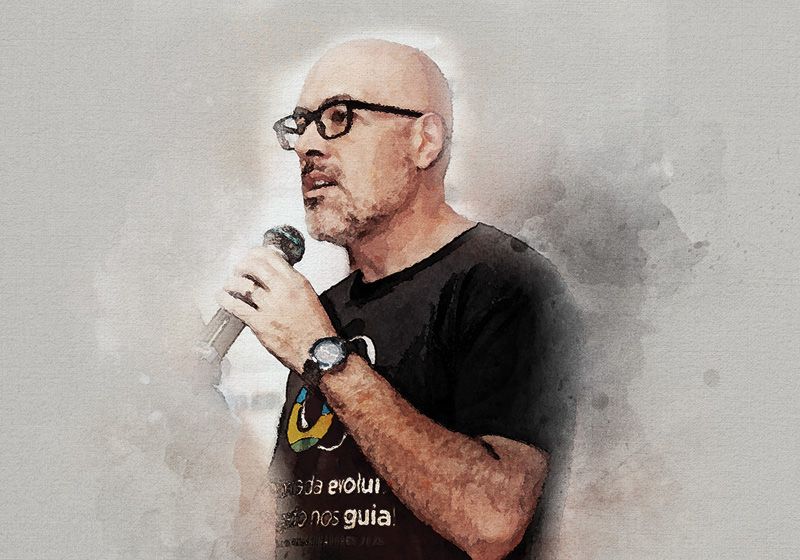Inspired by a passion for conservation, this postdoc builds nanomaterials that harness light to clean wastewater and advance environmental health.
Q | Write a brief introduction to yourself including the lab you work in and your research background.
I am Leonardo Zanata, a postdoctoral researcher at CPQBA-UNICAMP and researcher at Acqua Nobilis Equipment Ltd. My expertise lies in the synthesis and characterization of iron oxide and cellulose-based nanomaterials for oxidative catalysis, antimicrobial applications, and wastewater treatment, combining advanced materials science with environmental solutions.
Q | How did you first get interested in science and/or your field of research?
My interest in science and environmental research began early in life, fueled by a strong curiosity and passion for understanding the natural world. Growing up, I was particularly inspired by the adventurous work of Jacques Yves Cousteau, which sparked my fascination with aquatic ecosystems and environmental conservation. During high school, I chose to pursue a technical course in chemistry, which provided me with practical skills and early exposure to environmental laboratory work through an internship focused on wastewater treatment.
This combination of hands-on experience and academic study deepened my commitment to environmental science. When I started my undergraduate studies in biology, I continued working in water analysis laboratories, which reinforced my interest in applied research, addressing real-world environmental challenges. Over time, my focus evolved towards advanced oxidation processes and the development of nanomaterials for catalysis and pollutant degradation, blending chemistry, biology, and nanotechnology.
Throughout my academic journey, I have been motivated by the desire to create sustainable solutions for water and wastewater treatment, aiming to improve environmental quality and public health. This motivation continues to drive my current research on nanomaterials and microbial communities, contributing to innovative approaches in environmental remediation.
Q | Tell us about your favorite research project you’re working on.
My favorite research project focuses on developing new and sustainable nanotechnology to clean wastewater. We create tiny particles called FeWO₄/Fe₃O₄ nanocomposites, sometimes combined with cellulose, using green and eco-friendly methods. These particles work as photocatalysts, which means they use visible light to break down harmful and stubborn pollutants in water.
This project takes advantage of the special properties of tungsten oxide, which absorbs visible light, and superparamagnetic iron oxide nanoparticles (SPIONs), which help in making the material easy to recover and reuse. Adding cellulose makes the particles more stable and prevents them from clumping together. We study how the particles’ structure affects their performance, using various techniques to understand their shape, structure, and how they react to light.
We also test how well these new materials clean pollutants compared to commercial products, focusing on their efficiency, how many times they can be reused, and how safe they are for the environment. This project aims to create sustainable, cost-effective solutions using nanotechnology for better water treatment, helping protect the environment and public health.
Q | What do you find most exciting about your research project?
It’s the opportunity to integrate multidisciplinary approaches to solve real-world environmental challenges, especially in water and wastewater treatment. From my early days as a chemical analyst, gaining hands-on experience with advanced analytical techniques, to my doctoral research on the synthesis and application of iron oxide nanomaterials, each step has deepened my understanding and passion for sustainable technologies.
My recent work in developing nanomaterial-based catalysts for oxidative degradation of pollutants combines nanotechnology, environmental science, and biotechnology, which I find particularly thrilling. Being able to contribute to environmentally friendly solutions using innovative materials and green synthesis methods has been deeply rewarding. Moreover, collaborating with experts across fields and mentoring students has enriched my journey and broadened my perspective.
Q | If you could be a laboratory instrument, which one would you be and why?
I would be a Raman spectrometer. Raman spectrometers are amazing because they can precisely identify the chemical composition of materials without damaging them. They reveal detailed fingerprints of molecules using light, helping scientists understand materials at a very deep level. I admire their accuracy, versatility, and the way they work with tiny samples to uncover hidden information. Like a Raman spectrometer, I enjoy digging into the details and discovering new things, helping solve complex problems with precision and clarity in my research.
Are you a researcher who would like to be featured in the “Postdoc Portraits” series? Send in your application here.

